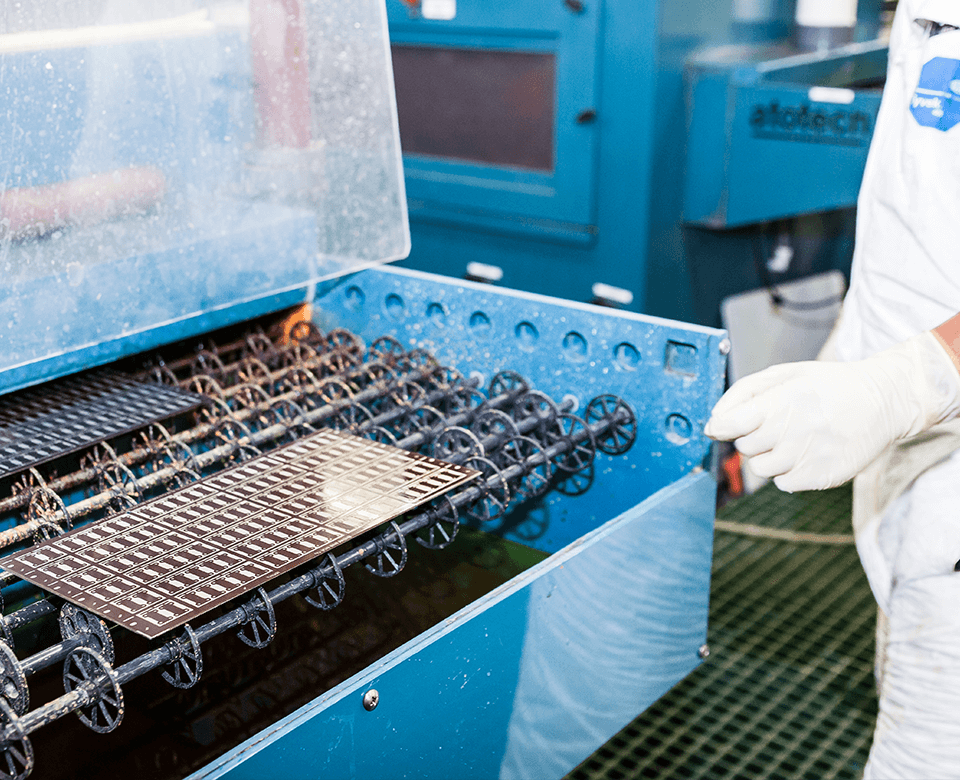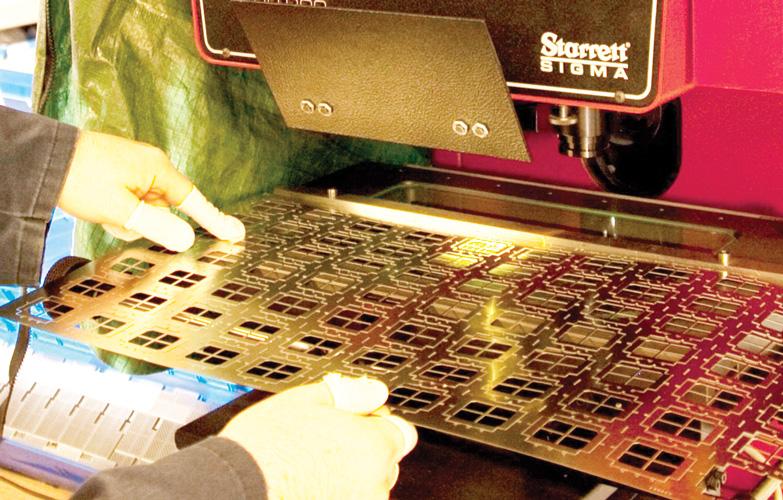3 Things Product Design Engineers Need to Know About Photochemical Etching
February 2022
Just ask any product design engineer about their process for creating a thin metal part, and they will tell you that this takes a great degree of research, time, collaboration with engineers, and working with engineering teams to determine which manufacturing process and metal type is ideal for each project. Then budgetary concerns can further complicate this process, which is why it is so critical to work with the best product design engineering company offering photochemical etching for thin metal parts, and other manufacturing services.
While veteran design engineers are aware of photochemical etching, there are a large number of them new to the space that are unfamiliar with this manufacturing method for thin metal parts. However, given the fact there are roughly 100 companies in the entire country offering photochemical etching services, it isn’t all that alarming that the process isn’t as widely known as some might think. When it comes to fabricating thin metal parts, the manufacturing process involving water jet cutting, laser cutting, wire EDM, electroforming, stamping, and CNC machining are certainly more widely known. Before we delve into the three things that product design engineers should know about photochemical etching, let’s first define exactly what this manufacturing process is.
What is Photochemical Etching?
Photochemical etching is an alternative machining method to fabricating thin metal parts. With this process, chemical etchants are used to eliminate any unwanted metal sections that are not part of the design, including tiny burrs and bits left on the edges. Most product development companies offering photochemical etching services have certain steps they follow in the photochemical etching process, but United Western Enterprises has eight steps under the strictest quality control to ensure superiority in the industry, and top-quality for customers. These eight steps include the following:
Protocol Design / CAD Design – Clients give us a .DWG or DXF file, or they will give us a drawing that our team uses to create a photo tool. The file is then converted into a workable photo tool that technicians use during every step of the manufacturing process.
Preparation and Metal Selection – The engineering team will select the right type of metal required to create the part. Then, before the etching process begins, the metal is cut into sheets and cleaned ensuring that any oils, oxidation, or grease is completely removed.
Photoresist Coating – A light-sensitive, acid-resistant photosensitive material is applied to the metal sheet using a special coating machine. This coating will enable photo etching on the metal that needs to be removed, while shielding the metal that needs to remain.
UV Exposure – After the metal sheet has received the photoresist coating, it is placed in an exposure unit between two sections of film that have been created according to the files submitted by the client. Then, the metal sheet is exposed to UV light from both sides, and when the light meets the resist, it gets hard (polymerized) while the remaining areas are soft.
Development – During the development phase, the soft resist is cleared away leaving behind only the hard resist. After the soft resist is gone, we are left with exposed metal that will require etchants to dissolve it away.
Chemical Etching – A wide range of etchants are used, and these will vary based on the material in use. Engineers will match the correct etchants to ensure the metal etching is efficient.
Photoresist Stripping – Once the resist is removed, the components the client ordered are inspected and submitted.
Final Inspection – Finally, all parts are carefully inspected to ensure they meet the right dimensional requirements, no burrs are present, and there are no defects.
Now that you have a good understanding of what photochemical etching is, and how United Western Enterprises performs this service, let’s examine some of the finer points that design engineers need to be aware of.
1. Photochemical Etching Capabilities
There are many design applications to choose from, but for clients making multiple thin metal parts, and that require using a wide range of materials, photochemical etching is an ideal solution because it can be used on a wider range of metals with more capabilities. There are over 50 types of metals that can be used in photochemical etching. Some of these include aluminum alloys, cold rolled steel, brass, beryllium copper, nickel, copper, and bronze. Because United Western Enterprises offers clients more capabilities, we are known as the leading photochemical etching company in the industry by design teams in multiple industries.
2. Photochemical Etching is Cost Effective
Photochemical etching is one of the most cost-effective ways to produce thin metal parts. First, it allows for flexible digital tooling. With many other processes, revisions are expensive when making small metal parts. But because this process is easy to modify, prototyping is not expensive. Furthermore, if you have multiple prototypes with the same thickness and material, they can be processed on the same sheet of metal, saving one a great degree of money.
Photochemical etching also reduces lead time. Companies like United Western Enterprises can often ship parts within days to a week. Because the tooling process is fast, and a wide range of metals are on hand, parts can be shipped very quickly and help you get your product to market at a faster rate. Photochemical etching also allows for greater repeatability with complex features–another benefit that cuts back on time and cost, but that ultimately gives manufacturers more capabilities.
3. Photochemical Etching Ensures that Metal Properties Remain Unaltered
One of the biggest concerns design engineers have revolved around the impact of stress that tooling can have on the metal. If one of your main goals is to find a low tolerance, high conductivity solution that will prevent deformation, then photochemical etching is likely the way to go.

Electronics only continue to get smaller, lighter, and thinner, and so do their internal components. One great example would be lead-frames, as they are a thinner part with fine pitching, they have detailed features, and low dimensional tolerances. Usually, these are made from nickel or copper because one will be dealing with high electrical and thermal conductivity, so photochemical etching would be an ideal application for a project like this one.
Call United Western Enterprises for the Best Photochemical Etching Services Today
United Western Enterprises is a leading photochemical etching company serving multiple industries that include aerospace, automotive, electronics, medical, and many more. Our standard of service has raised the bar, as we produce only the finest quality custom thin metal parts to perfection, while working alongside our client’s teams, practicing the best levels of communication and customer service. Call today and discover how we can help improve your product and get it to market in a fast, cost-effective manner.
